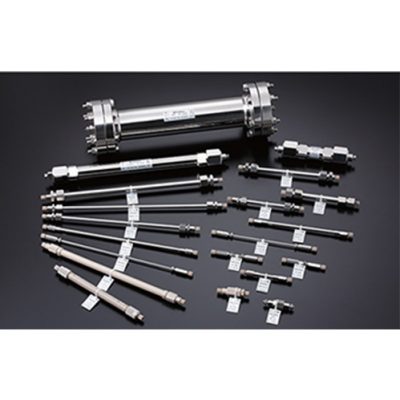Chiral Separation Chromatography (CS)
Separation of optical isomers using chiral selectors. request a quote…
Show 
| VC-50 2D |
|
||||
| NH2P series |
|
||||
| VG-50 series |
|
||||
| VN-50 series |
|
||||
| SC1011-7F, MN-431 |
|
||||
| SC1211, DC-613, SZ5532 |
|
||||
| KS-801 (), KS-802 (),
SP0810, SC1011 |
|
||||
| KS-803, KS-804 |
|
||||
| VT-50 2D |
|
| Functional group | Particle size (µm) | Base material | Column size (mm) | |
| HILIC | amino | 4 | Polyvinyl alcohol | 4.6×150 |
| Quaternary ammonium | 5 | Styrene divinylbenzene copolymer | 4.6×250 | |
| carboxyl | 6 | 4.6×10 | ||
| diol | 7 | 2.0×150 | ||
| Sulfo () | 9 | 2.0×10 | ||
| Sulfo () | 10 | 10×150 | ||
| Sulfo () | 13 | 10×250 | ||
| 4.6×50 | ||||
| 3.0×250 | ||||
| 3.0×10 | ||||
| 2.5×250 | ||||
| 20×300 | ||||
| 7.5×50 | ||||
| 8×300 | ||||
| 6×50 | ||||
| 8×100 | ||||
| 6×150 | ||||
| 6×250 |
show DATA — DO NOT CHANGE ID–